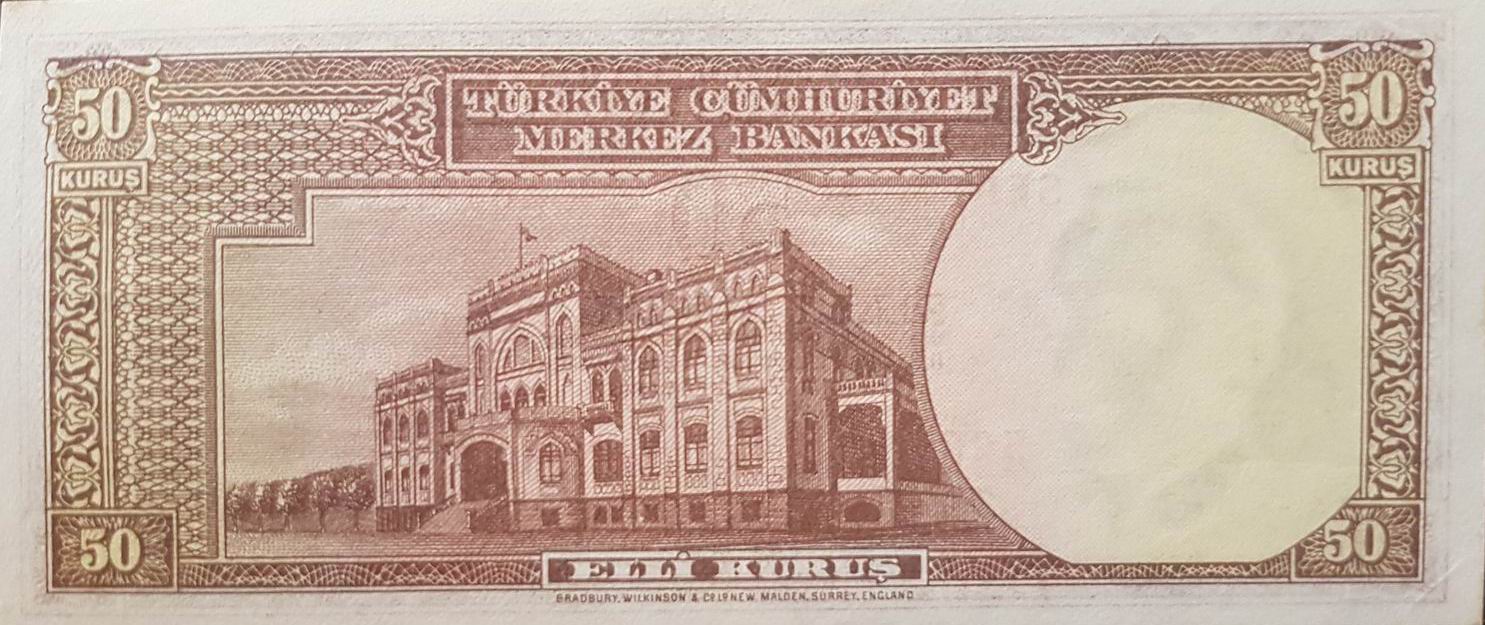Sunken Ship Money

I entered the world of paper money collecting only just last year (2018). Actually, I have been collecting paper money from around the world for a long time -- in the past I brought local paper money from the countries I visited as souvenirs, but it was not until last year that I started to collect them more regularly.
Since I became more enveloped in this hobby, I have learned something interesting about, specifically, Turkish paper money which is known as “Sunken Ship Money” (Turkey p133). Once I came across this term, I researched it. To my surprise I realized that I had no idea about any of the back story to these interesting Turkish banknotes. Here is the story of “Sunken Ship Money” which was never officially issued ...
It was during the Second World War that all of Europe was under destruction because of devastating war. European countries were suffering from high inflation as a result of wartime economics. Turkey was among one of the few countries that stayed neutral during this war, and for this reason Turkish money was one of the most prestigious and valuable currencies at this time. During this era Turkey ordered a new type of 50 kuruş banknote which had the portrait of President İnönü of it; this banknote was printed by Bradbury Wilkinson Co. out of England. The value of the money that was printed was equal to a small African country’s budget at that time. The banknotes were printed and loaded onto the British ship “Yorkshire” (in some sources the name is the ship is stated as “City of Roubaix”) in London. After days of sailing through the Mediterranean Sea the Yorkshire anchored in Pireus Harbor, Greece, as its last stop before heading on to Istanbul.
But as fate would have it, just prior to its departure from Greece a German air attack on Pireus started all of a sudden. German pilots easily recognized the British flagged ship in the harbor and without knowing its load they focused their attacks especially on the Yorkshire. It was not long into the battle that ship was hit many times and started to sink to the bottom of the sea. While the air raid was going on the Greek residents of Pireus noticed a lot of bundles of money were floating on the surface of the sea. They were quite surprised to see their neighbors Presidents portrait on the banknotes in the bundles. With this information coming from the harbor many Greeks rushed to the waterside and even into the water to collect the money floating in their harbor. The Greek police was busy enough dealing with the air raid so they did not pay much attention to this “money rush”. After several hours there were many Greek millionaires walking through the streets of Pireus.


It was hard to relay this incident to President İnönü, but someone had to do it. Prime Minister Refik Saydam told the President what happened to newly printed Turkish money and İnönü’s reaction was simple: he simply said “What a pity!”. He ordered another issue and made it so that the original issue of banknotes that was shipped on the Yorkshire was made publicly invalid in Turkey. However, in those days communication was not as quick as it is today, and so for years Greek traders had bough products in Anatolia using the invalidated and devalued sunken money which was now washed with the salty sea water of the Mediterranean. There were many suspicious Turkish people who were seeing this money for the first time, to which the Greeks said “Don’t you see your President on the money? This is newly printed -- we got them in Istanbul! See? They are crisp and very good looking.” While Europe was facing a brutal war, Turkey struggled to collect this unissued money until 1945.
I happened to have one of these 50 Kuruş in my collection. It is not hard to find them, as there is still a supply of “Sunken Money” in Turkey.





